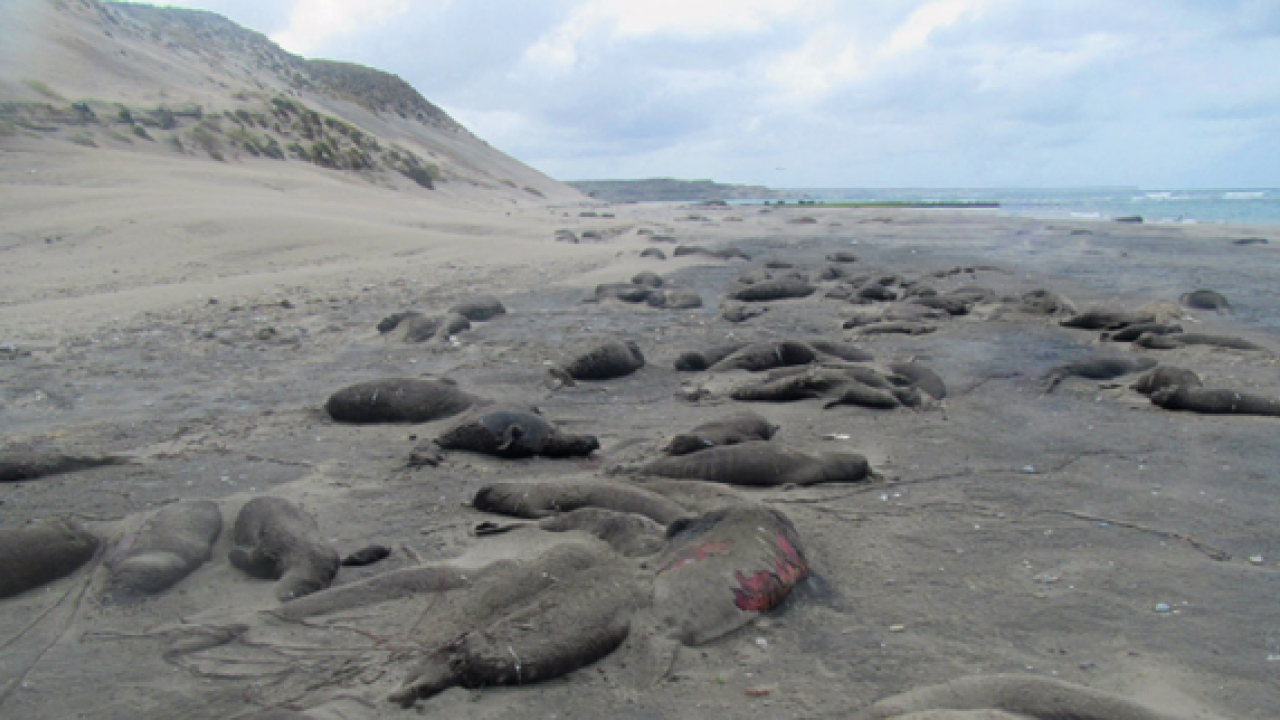
Catastrophic Mortality of Elephant Seals in Argentina Identified as Outbreak of Avian Influenza
The outbreak in a new species raises concerns for elephant seal conservation and cross-species transmission, including potentially to humans
The first reported outbreak of high pathogenicity H5N1 avian influenza (HPAI) in elephant seals has been identified by researchers in Argentina. The outbreak caused extreme mortality, with a 70% mortality rate in pups born in the 2023 breeding season, according to research co-led by the UC Davis Wildlife Health Center at the School of Veterinary Medicine and published in Marine Mammal Science. The mortality rate reached at least 96% by early November 2023, in the surveyed areas at Península Valdés (PV) in Argentina.
Adult seals were also affected, with a significant decrease in numbers. The demographic consequences of the epidemic will be better understood in October 2024 when a colony count will take place. But the impacts could be significant, since adult females may have left the breeding grounds without becoming pregnant after losing their pups. Moreover, the loss of an entire cohort of young females, will also show population level effects a few years from now, when they would have been expected to become of reproductive age. PV is the only continental colony of the species, and the Patagonian population of elephant seals has been monitored since the 1980s. Currently at a steady increasing rate, HPAI may have shown just how devastating a single infectious disease outbreak can be for a marine mammal population. Concerns are higher, species-wise, now that the outbreak has spread to other colonies in South Georgias/Islas Georgias del Sur in the Sub-Antarctic region.
The outbreak has also caused the death of thousands of South American sea lions and fewer fur seals along the Argentine Patagonia coastline, and now extends into Uruguay and southern Brazil. The virus has also been found in seabirds, particularly affecting several species of terns.
“This outbreak is the greatest calamity to affect wildlife, particularly marine mammals, in South America in recent history,” said Marcela Uhart, a veterinarian who co-led the study.
Possible transmission between mammals raises concerns for public health and reinforces the need for urgent characterization and monitoring of virus evolution, which is being led by the veterinary team of Uhart and Ralph Vanstreels of the UC Davis Karen C. Drayer Wildlife Health Center Latin America program, in collaboration with virologist Dr. Agustina Rimondi of the Instituto de Virología, Instituto Nacional de Tecnología Agropecuaria in Argentina. In the meantime, preventive measures for humans are of paramount importance, as many moribund and dead seals strand on beaches near cities and are approached by people and dogs. The virus has infected and killed individuals of many species of terrestrial carnivores in other parts of the world, including the United States.
“There is not much we can do once HPAI reaches wildlife populations,” said Uhart. “We need to acknowledge and work to minimize these impacts, including controlling what we can, such as poultry farm biosecurity, to reduce the chance of a continuing cycle of disease spread.”
This investigation was done in collaboration with scientists from the Wildlife Conservation Society Valeria Falabella, Julieta Campagna, Victoria Zavattieri and Claudio Campagna. Funding was provided by the Wildlife Conservation Society.
Read more about avian influenza's impact on marine mammals from UC Davis News.
# # #
